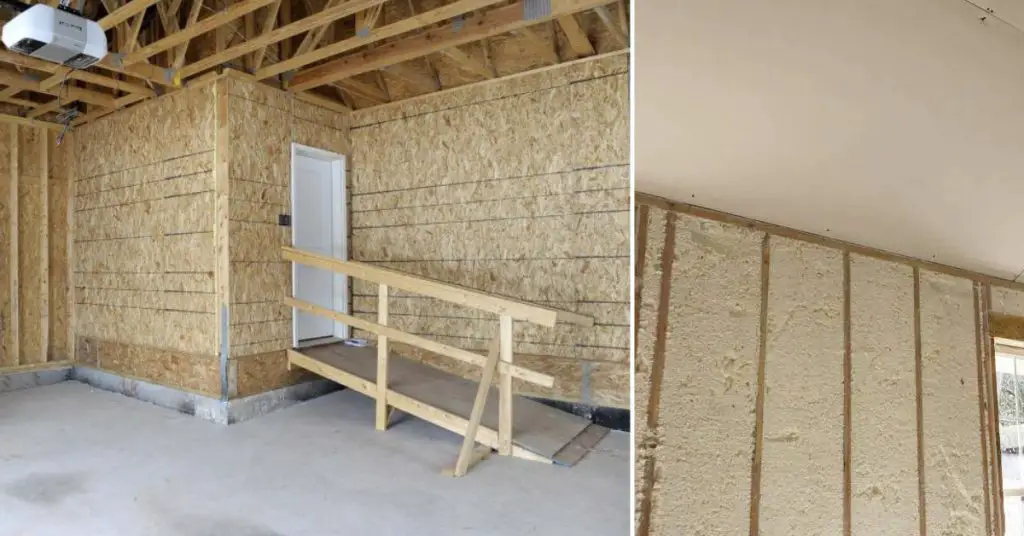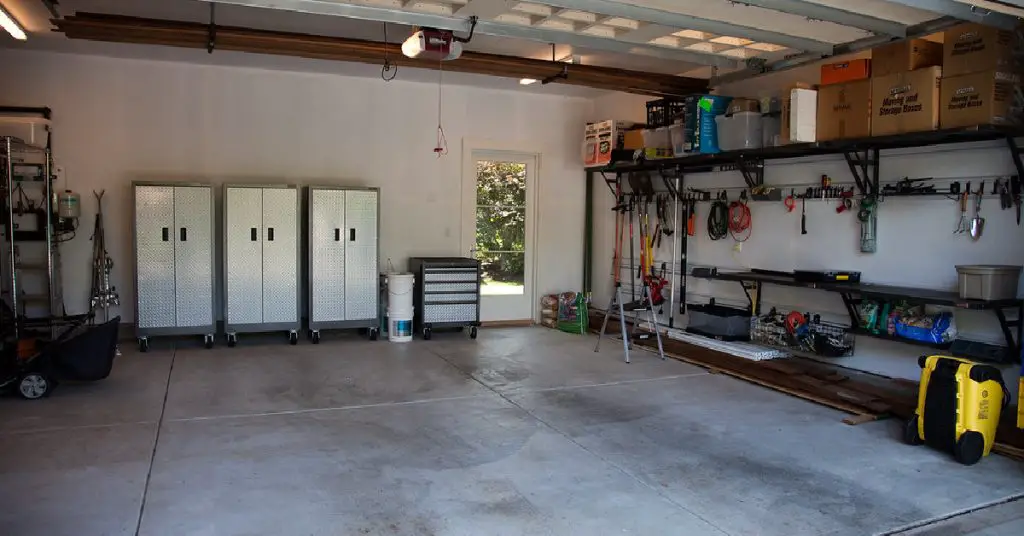Insulating your garage is crucial for creating a comfortable and energy-efficient living space. A well-insulated garage can reduce energy costs, regulate temperature, and increase the overall value of your home. If your garage walls are already drywalled, you can use several methods and techniques to insulate the space without removing the existing drywall. This guide will provide a step-by-step overview for how to insulate garage walls that are already drywalled. From clearing the walls to installing fiberglass insulation, we will explore the pros and cons of each method to help you make an informed decision.

4 Easy Steps for How to Insulate Garage Walls That Are Already Drywalled
Follow the steps outlined below to insulate your garage walls.
Step 1: Clear the Walls
Before starting the insulation process, it’s important to clear everything from the walls of your garage. This will give you a clean and unobstructed surface to work on and make it easier to fill any crevices in the wall.
Steps for Removing Everything from the Wall
- Empty shelves and remove any items hanging on the walls.
- Remove any furniture or equipment from the space.
- Clear the floor of any debris or obstructions.
Tips for Filling Crevices in the Wall
- Fill any gaps or cracks in the wall with caulking or foam sealant.
- Seal around windows and door frames to prevent air leaks.
- Check for and fill any holes where pipes or wires enter the wall.
By taking the time to clear the walls and fill crevices, you will create a smooth surface that is ready for insulation. This will also help ensure that your insulation is effective and will not be compromised by air leaks.
Step 2: Install Fiberglass Insulation
Fiberglass is a popular choice for insulating garages as it is widely available and easy to install. The following steps outline the process of installing fiberglass insulation in your dry-walled garage.

Steps for Installing Fiberglass Insulation
- Measure the width and height of each wall to determine the amount of fiberglass needed.
- Cut the fiberglass to size and fit it snugly between the wall studs.
- Secure the fiberglass in place with special tape or by stapling it to the studs.
- Repeat the process for each wall, ensuring that the insulation is evenly spaced between the studs.
- Use a vapor barrier, such as plastic sheeting, to cover the insulation.
Tips for Installing Fiberglass Insulation
- Wear protective clothing, such as gloves and a mask, when handling fiberglass insulation.
- Use caution when cutting the insulation, as the fibers can be irritating to the skin and eyes.
- Make sure to seal all seams and joints between sections of insulation to prevent air leaks.
By following these steps, you will be able to install fiberglass insulation in your dry-walled garage effectively and efficiently. This will help keep your garage warm in the winter and cool in the summer, making it a more comfortable space to use all year round.
Step 3: Other Insulation Techniques
In addition to fiberglass, there are several other insulation techniques that can be used to insulate your garage walls. Some of these include:
Blown-In Insulation
- Involves blowing loose insulation, such as cellulose or fiberglass, into the wall cavities using a special machine.
- Often requires removing a portion of the drywall to access the cavities.
- Provides good insulation coverage and can be done quickly and easily.

Injection Foam Insulation
- Involves injecting expanding foam insulation into the wall cavities through small holes drilled in the drywall.
- Can be done without removing the drywall.
- Offers excellent insulation value and seals any gaps and cracks in the walls.
Spray Foam Insulation
- Involves applying spray foam insulation directly to the wall surface.
- Can be used to fill gaps and cracks in the walls, or to insulate entire walls.
- Provides good insulation value and seals any air leaks.
When choosing an insulation technique, consider the cost, ease of installation, insulation value, and suitability for your specific needs. With the right technique, you can effectively insulate your garage walls and make your garage a more comfortable and energy-efficient space.
Step 4: Insulating the Roof and Door
Insulating the roof and door of your garage can also help improve the energy efficiency and comfort of the space. Here are some tips for insulating these areas:
Roof Insulation
- Insulate the roof to prevent heat loss and reduce noise from outside.
- Options include adding fiberglass batts between the roof rafters, or spray foam insulation on the underside of the roof.
- Consider the R-value of the insulation material when making your selection.

Insulating the Garage Door
- The garage door can be a major source of heat loss, so insulating it can make a big difference in the comfort of your garage.
- Options include adding insulation to the interior of the door or replacing the door with a more energy-efficient model.
- When selecting an insulation material, consider factors such as R-value, cost, and ease of installation.
Insulating the roof and door of your garage can help improve the energy efficiency and comfort of the space, making it a more enjoyable place to spend time. By following these tips, you can make the most of your insulation efforts and achieve the results you want.
You Can Check It Out to Heat a Garage Without Electricity
How to Choose the Right Insulation for Your Garage Walls
When choosing insulation for your garage walls, consider the following factors:
- Type: Rigid foam, fiberglass, and natural material options are all available. Choose one that is not made with formaldehyde.
- R-value: Rigid foam offers a high R-value per inch of thickness.
- Fit: The insulation should fit the space and be easy to install.
- Square footage: Divide the square footage of your garage by the square footage that each roll or package of insulation will cover to determine how much you need.
- Easy to install: Choose insulation that is easy to install, and consider hiring a professional if necessary.
You Can Check It Out to Insulate a Roll Up Garage Door.
FAQs About Garage Wall Insulation
What is the Best Way to Insulate Garage Walls?
To insulate garage walls, remove any items mounted on the walls, clear out the stud cavities, and consider insulating not only the walls but also the garage doors, ceiling, and flooring. Choose insulation material based on the R-value per inch of thickness and the level of insulation needed.
Can You Spray Foam Without Removing Drywall?
Yes, it is possible to spray foam insulation without removing the drywall, but the surface should be clean and free of debris, and you should drill holes in the wall to apply the foam while wearing protective equipment and ensuring proper ventilation. However, if you’re only insulating a room or two, removing the drywall may be more efficient.
Conclusion
Insulating a garage that already has drywall can be a great way to improve the energy efficiency and comfort of the space. With several techniques available, including blow-in insulation, injection foam insulation, and spray foam insulation, you can choose the method that works best for your needs. By following the steps outlined in this article, you can successfully insulate your garage and enjoy the benefits of a more energy-efficient and comfortable space. Whether you’re working on a DIY project or hiring a professional, proper insulation is an important step in making your garage a space you can enjoy for years to come.


